How Delivery Management Software Cuts Costs and Saves You Money
Learn how delivery management software cuts costs of last-mile logistics and hlps you to save up to 50% of your operating delivery costs.
Home > Blog > Dynamic Route Optimization: #1 Software Feature You Overlook
Route OptimizationLearn how dynamic route optimization software can help you cut costs, maximize efficiency, and streamline your field services and delivery processes.
Rising consumer demand for speedy, on-time deliveries has led to an increase in the availability of route planning technologies that help companies streamline delivery operations.
The market for route optimization software is brimming with options with unique offerings and varying degrees of complexity, making it challenging to figure out which software is right for your business.
This typically results in less-than-successful implementations because companies settle for software providers that don’t offer features and capabilities that meet their needs.
Knowing what to look out for when evaluating routing technologies will keep you from making the same mistake and wasting money on a solution that only meets you halfway.
This article will highlight the importance of dynamic route optimization and share must-have features to consider when shopping for a route planning tool.
And here’s a summary:
Dynamic route optimization is a logistical process that leverages computer algorithms to examine multiple routing options and determine the best route for your delivery needs.
It takes weather conditions, construction issues, traffic situations, and other factors into consideration and makes real-time adjustments to optimize your routes.
With traditional static route planning, you would have to spend hours mapping out your delivery schedule manually.
This schedule then becomes set in tone, making it impossible for you to adjust your routes based on the realities of the day.
Dynamic route optimization brings flexibility to your delivery process.
So you can create efficient routes from scratch every day that work to your advantage and account for changing priorities and constraints such as driver availability, order amount, time windows, and traffic congestion.
Using dynamic route planning software to automate your delivery operations and fleet management processes can do a lot more for your business than just getting you from point to point as quickly as possible.
Here are a few of the advantages you can reap from choosing dynamic routing technology over static route planning:
With the right route optimization software, your dispatch team will know exactly how much time it will take to arrive at a specific delivery point using the most optimal routes.
So they can give customers more reliable and precise information about when they can expect their orders to arrive. According to Verizon Connect, keeping customers informed is a high-impact factor influencing field service businesses.
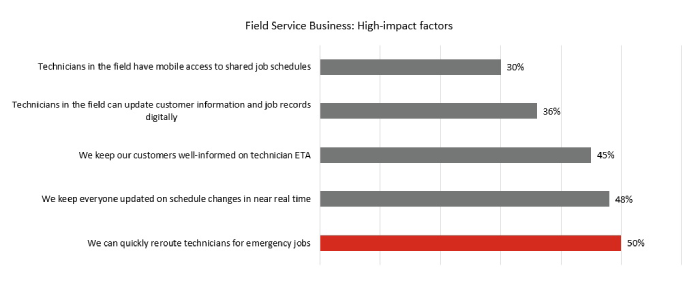
You can also get notified about potential delays so you can take action to rectify the situation immediately.
According to the Verizon Connect Survey, 53% of businesses that incorporated dynamic routing technology into their logistics processes reported productivity increases.
With the support and flexibility of dynamic routing systems, you can save time, cut down mileage, improve your order capacity, and make your resources work harder for you without significantly raising your operating costs.
Route optimization software helps you find the shortest and best possible routes for drivers.
Thus, it reduces their driving time, the need for unplanned detours, and the amount of fuel they consume on each trip.
Less mileage means less fuel usage, leading to lower carbon emissions and less harm to the climate.
It will also help decrease your operating costs because you will be spending less on fuel and vehicle maintenance.
Route planning technology helps you avoid doubling back on previous destinations, thus increasing route efficiency. You can also sequence your stops for efficiency, meaning drivers will deliver each package in the most logical way (rather than just delivering item A, item B, item C, etc.).
Optimized route planning helps to boost retention and job satisfaction by distributing the workload fairly so that no driver is overworked.
It provides clearly detailed routes and directions for delivery drivers to follow and evenly distributes tasks across your fleet to maximize stops without making them work extra hours.
You can also assign tasks based on drivers’ experience and expertise, meaning the best person for the job always does it.
Route planning creates optimal routes that account for all sorts of potential hindrances, including weather, vehicle capacity, driver availability, and road conditions.
To ensure that the solution you choose can meet the needs and expectations of your business, you need to pay attention to several characteristics and features when evaluating each dynamic routing technology.
These include:
The right dynamic routing platform shouldn’t only be accessible via the web or a desktop computer.
It needs to have an intuitive and user-friendly app that your couriers, drivers, service agents, or delivery agents can download and access directly on their mobile devices – be they Linux, iOS, or Android.
With a mobile app, your drivers can get the most important information they need about the routes, pickups, orders, or deliveries that have been assigned to them.
Your dispatchers also won’t have to go through the trouble of reaching out to drivers directly every time a task is added and an adjustment is made to their schedules. They can just input things on their end, and the app will immediately notify drivers about the changes.
A mobile app that’s connected to your route optimization software will also enable your operations managers to live-track vehicles, monitor idle time, identify breakdowns, and get alerts about possible delays in real time.
![]()
Mobile-compatible route planning software like eLogii can also assist drivers by providing them with optimized routes, detailed instructions, and turn-by-turn navigation that they can follow right on their screens.
The whole point of investing in a dynamic route optimization platform is to improve the flexibility and speed of your operations. That means creating route plans fast, adapting quickly to unforeseen circumstances, and proposing optimal routes to avoid hiccups and stay on schedule.
But not all route planning software can give you this kind of agility.
Some take their sweet time to analyze road and traffic data to find the best alternate routes for you. This lapse can result in delays, missed stops, and failed deliveries.
If you’re interested in providing an agile last-mile delivery service, you have to choose software with the ability to instantly respond to bad weather, traffic congestion, blocked roads, and other obstacles as they arise.
When you encounter unfavorable conditions that threaten the flow of your delivery, your software should automatically handle the situation within seconds.
It should also alert dispatchers so they can reassign the delivery to another driver if the situation calls for it.
Your delivery schedules don’t always go as planned.
Customers may cancel their orders, new requests may roll in at the last minute, or a shipment may be delayed, thereby eliminating the need to have it picked up.
The ability to respond to these developments and implement changes in route plans on the fly can save your team a lot of stress.
You won’t always have your computer on you. So, your mobile app should be able to manually reassign tasks, add a new stop, remove existing stops, or change the sequence of tasks between routes on the spot in just a few taps.
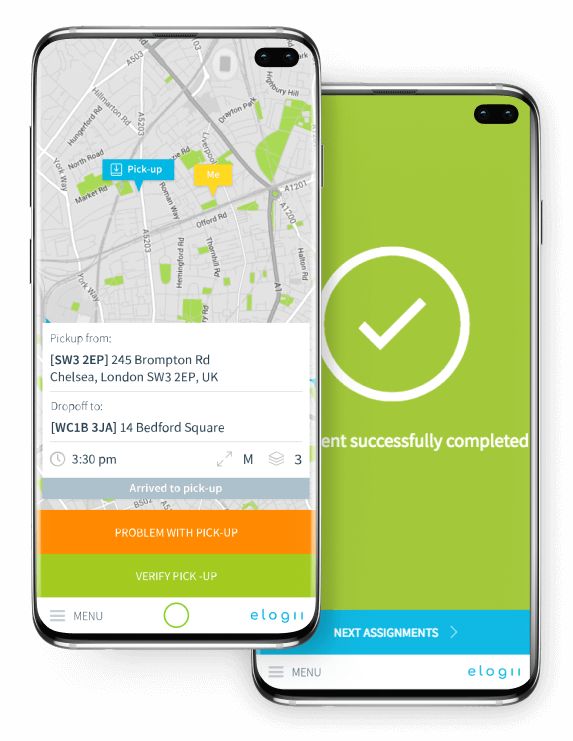
Then, your route planning technology can share these live updates with relevant stakeholders – drivers, dispatchers, customers, etc. – to keep them aware of new developments.
If you want to be able to edit routes to incorporate last-minute changes, make sure that this functionality is included in the software you’re exploring.
Before choosing a dynamic routing software provider, take a very close look at the quality and type of customer service that will be available to you.
When your driver is having issues with the technology or having trouble understanding how a particular feature works, it may not always be feasible for them to jump on a call with someone who can talk them through the problem.
As a result, they need an easy, fast, and efficient way to ask questions, share their complaints, and receive the help they need without jumping through hoops or waiting on the phone.
This is where a live chat feature comes in handy.
With the right routing technology, drivers can simply select the live chat option within their mobile app.
And they will interact with experienced agents who can help them troubleshoot issues with the software or find solutions to any other problems they might have.
When evaluating software providers, you need to consider the pricing model they offer and make sure that it aligns with your budget.
Some providers use a per-driver pricing scheme where the cost of the software is calculated based on the number of drivers and vehicles you use.
While this might work for companies with a large fleet and full-time drivers, it can be a more pricey option for those who only use drivers on a part-time or freelance basis.
It’s more cost-effective to select a route optimization solution that offers a flat subscription fee and prioritizes the number of tasks over the number of drivers.
This way, you will be paying for a specific volume of deliveries per month regardless of how many drivers and vehicles you use.
eLogii is one such option. We offer three pricing tiers plus an enterprise plan for large companies:
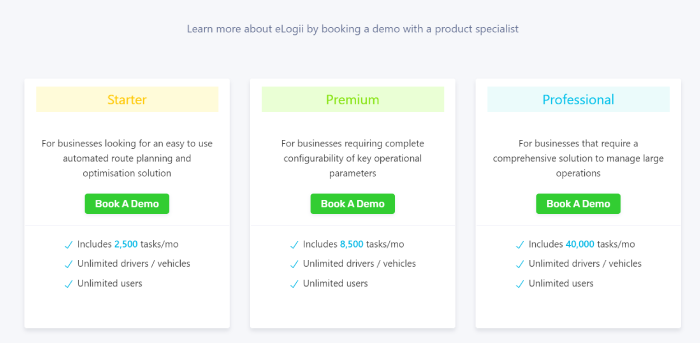
Resolving disputes when a customer claims their order was not delivered or was delivered in poor condition can eat up a chunk of your time. That’s where Proof of Deliveries (PODs) come in.
PODs reduce the chances of such conflicts arising and serve as a line of defense against false claims by providing tangible evidence and confirmation of delivery.
It makes it easier for customers to locate packages that were dropped off when they weren’t home and easier for logistics managers to verify that drivers are successfully completing deliveries.
High-quality route optimization software will allow you to collect customer signatures electronically. It might also have other options, like the ability to capture and upload photos of the package after it has been delivered to its final destination.
However, more advanced route planning applications will also provide the option of scanning barcodes, QR codes, or alphanumeric codes, as well as using forms or leaving notes for PODs.
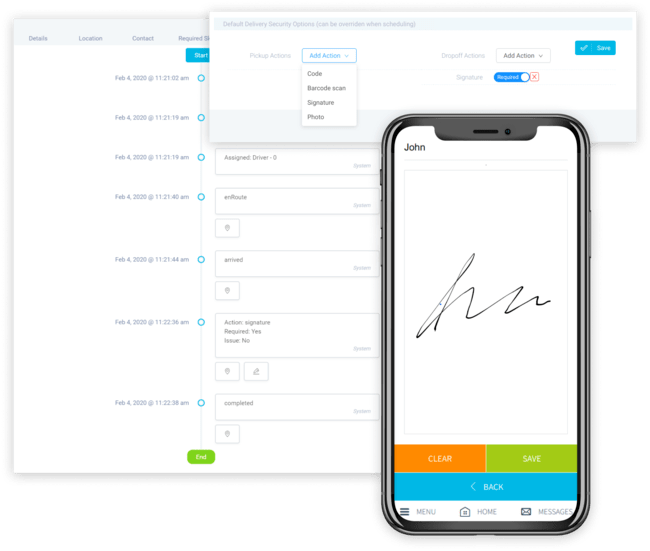
For example, eLogii lets you configure your preferred method of proof at the collection point, delivery point, or both.
It also gives you the freedom to customize additional workflows and rules based on what works best for your business and customers.
Whether you’re running a single depot or multiple depots with separate or shared fleets, you need a route planning solution that can optimally allocate tasks, orders, and deliveries to vehicles.
If you want your fleet to be as efficient as possible, comprehensive vehicle management features are a must-have for any route planner you’re considering.
This means assigning the right vehicle to each delivery and driver based on skill, distance, work schedule, vehicle capacity, traffic conditions, order quantity, type of goods, and other operational parameters or constraints.
eLogiii, for example, is a sophisticated route optimization software that leverages powerful algorithms to help you maximize the use of all your vehicles. You can allocate vehicles based on their characteristics, drivers, and the types of loads they need to carry.
You can enter key information about each vehicle and use this data to drive your supply chain practices.
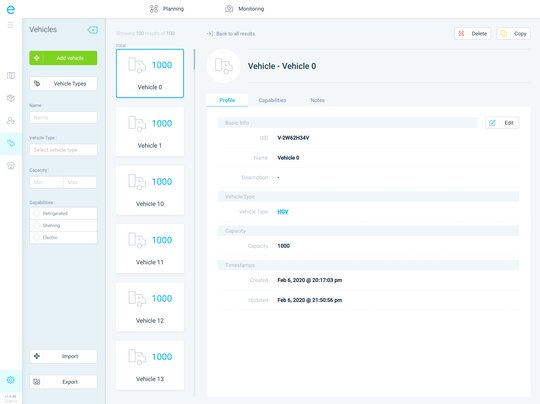
The best dynamic route planning technology should empower you to create optimal and cost-effective routes and efficiently utilize your resources to improve your delivery services.
When evaluating route optimizers, think about the current needs of your business and the functionalities you may require as you grow, and weigh the features offered by each provider against these requirements.
Prioritizing route optimization features such as on-the-go route editing, route analytics, live chat support, instant rerouting, multi-drop route planning, and assorted Proof of Delivery (POD) options will significantly enhance your last-mile delivery efforts.
Learn how delivery management software cuts costs of last-mile logistics and hlps you to save up to 50% of your operating delivery costs.
When done properly, fleet dispatching can enhance your revenue and allow you to scale operations. Here, we show you how to improve it.
From better driver management through fuel and cost reduction, to more profit, this article shows you 16 benefits of driver route software.
Be the first to know when new articles are released. eLogii has a market-leading blog and resources centre designed specifically to help business across countless distribution and field-services sub sectors worldwide to succeed with actionable content and tips.
